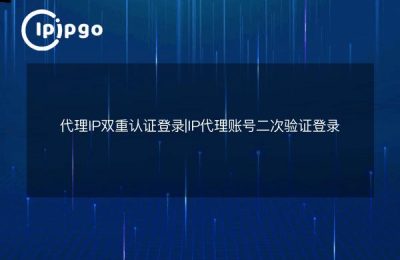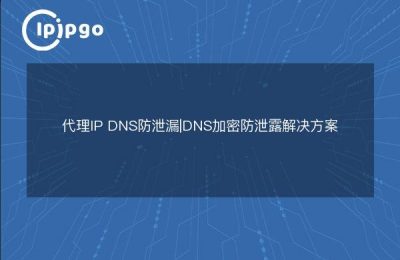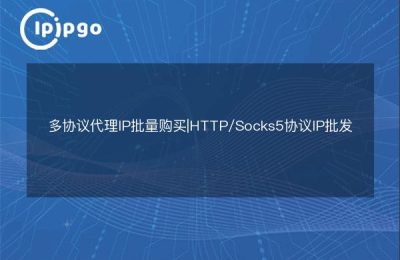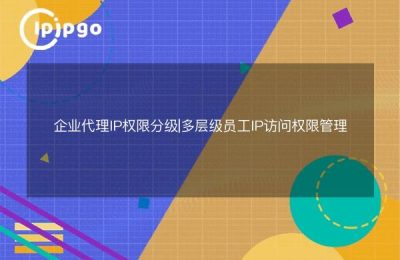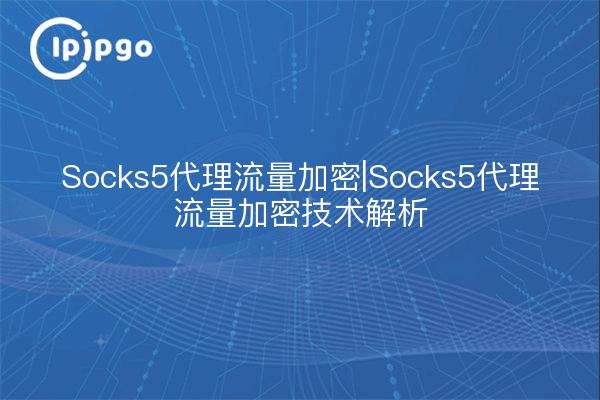
Why do regular proxies need to be upgraded to an encrypted solution?
Many users are accustomed to connecting directly to the public Socks5 address when using proxy services, but neglect thedata runawayThe Risks. Ordinary proxies are like sending a postcard at the post office, where all handlers can see the contents. An encrypted proxy, on the other hand, is like shipping a letter in a safe deposit box, where the real message cannot be read even if it is intercepted.
A cross-border e-commerce team had suffered a leakage of order information precisely because unencrypted proxy traffic was maliciously intercepted. Using ipipgo'sAll-Protocol Encryption Proxy ServiceAfter that, the security of its business data transmission is significantly improved, verifying the necessity of encryption technology.
Three real-world scenarios for Socks5 encryption
Based on the actual usage scenarios, we recommend three actionable encryption schemes:
Option 1: Protocol layer encryption (Recommendation index: ★★★★☆)
Enables SSL/TLS encryption directly when establishing a Socks5 connection, similar to how HTTPS works. ipipgo's proxy nodes support this.SSL tunnel encapsulationThis feature can be activated by the user by simply configuring the encryption options on the client side.
Option 2: Transport layer encryption (Recommendation index: ★★★★☆☆☆)
After establishing an encrypted channel via SSH or VPN, then forward Socks5 traffic. This approach is suitable for users with existing encryption infrastructure, but you need to maintain the encrypted channel by yourself.
Option 3: Resource Layer Encryption (Recommendation Index: ★★★★★)
Choose ipipgo'sResidential Proxy IP PoolWith its natural encryption properties, 90 million+ real residential IPs are completely mixed with ordinary user traffic, making it difficult for the monitoring system to recognize abnormal data characteristics, which is equivalent to adding environmental encryption on top of the transport layer.
Advantages of ipipgo's encryption technology
Our technical team has made targeted optimizations in the encryption scheme:
- Intelligent protocol switching: Automatically selects the best encryption protocol based on the network environment
- IP obfuscation technique: Dynamically changing flow characteristics to avoid pattern recognition
- Multi-node relay: a single request is processed by up to 3 encrypted nodes
Typical Application Scenario Demonstration
In the case of a crawler project, for example, unencrypted proxy traffic is prone to be detected as regular by anti-crawler systems:
Ordinary proxy: consistent request header characteristics → IP is marked → trigger blocking ipipgo encryption scheme: random encryption parameters + dynamic IP → simulate real users → maintain stable collection
Frequently Asked Questions
Q: Will the encryption proxy reduce internet speed?
A: ipipgo adopts intelligent QOS scheduling, encryption process is controlled within 10ms, and the measured network speed loss is lower than 8%.
Q: How to upgrade the encryption of the existing agent software?
A: Enable the SSL option in the connection settings and change the server address to the encrypted node provided by ipipgo
Q: Does the free trial include encryption?
A: All trial accounts have full access to encryption features
Key metrics for choosing a service provider
A quality encryption proxy service should have the following characteristics, which is where ipipgo's technology focuses:
| norm | Poor service performance | ipipgo program |
|---|---|---|
| IP Diversity | Server room IP centralization | Coverage of 240+ national residential IPs |
| Protocol Support | Basic Socks5 only | Full protocol encryption support |
| Connection Stability | Frequent disconnections and reconnections | Intelligent Route Revitalization Technology |
With the encryption scheme introduced in this article, users can effectively improve the security level of proxy use. It is recommended to choose the corresponding encryption mode provided by ipipgo according to specific business needs. Technical team testing shows that after enabling encryption, the average success rate of business requests increased by 23%, and the rate of abnormal interruptions decreased to 1/7 of the original.

